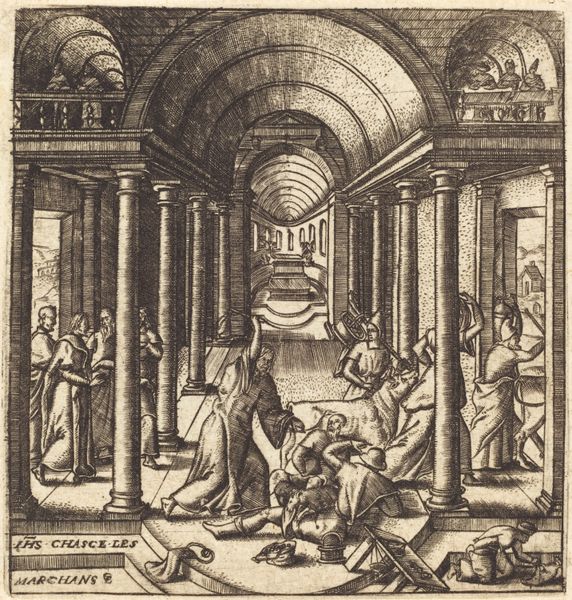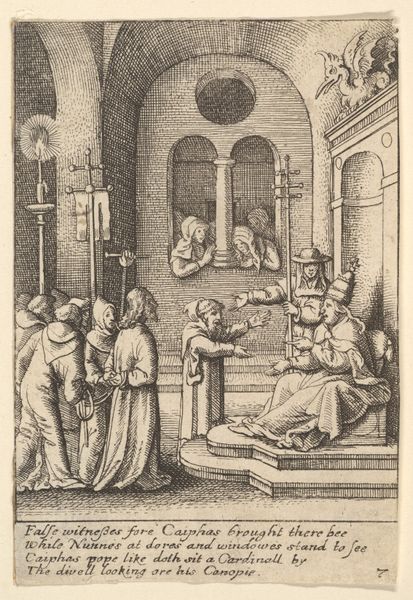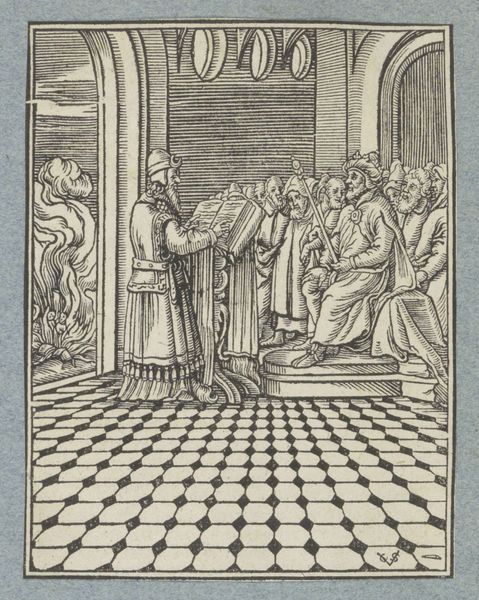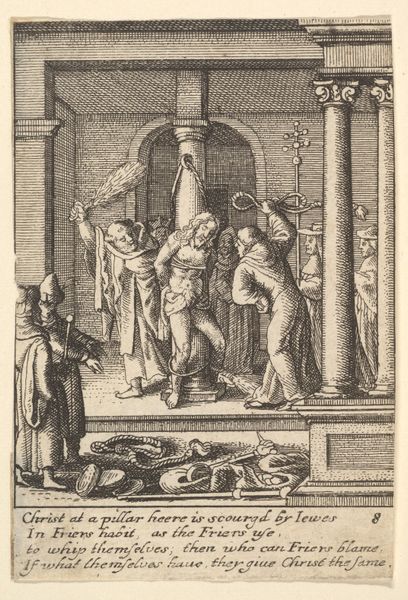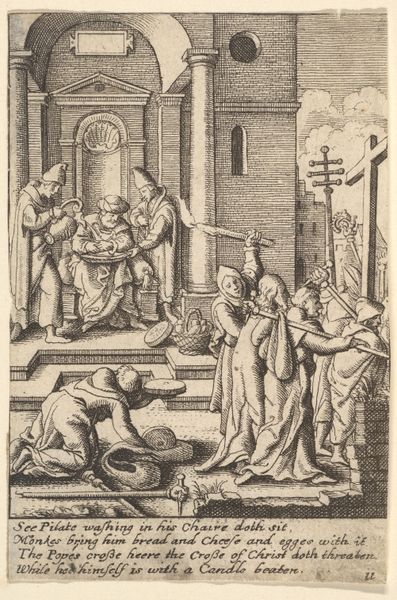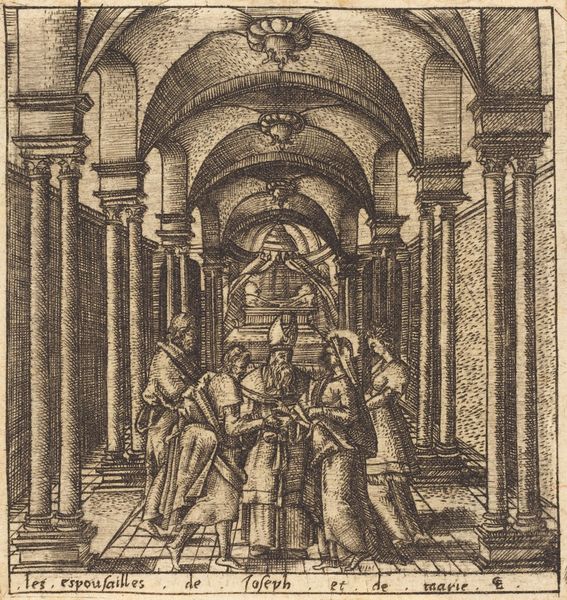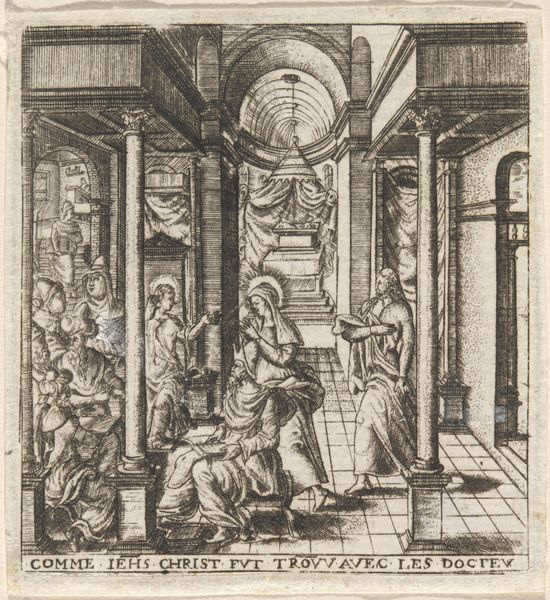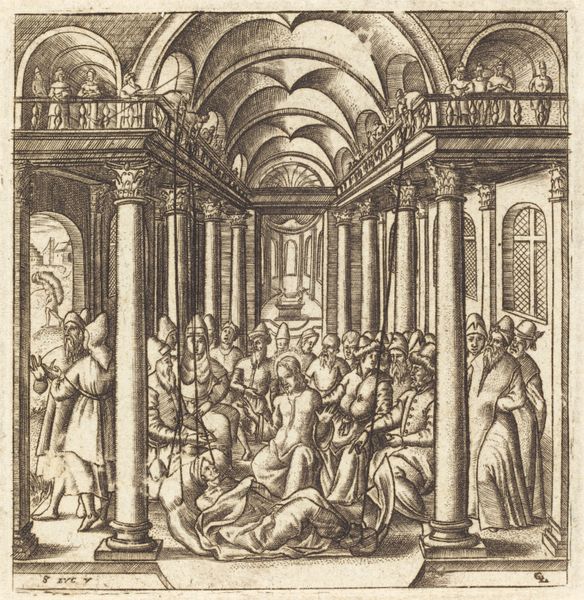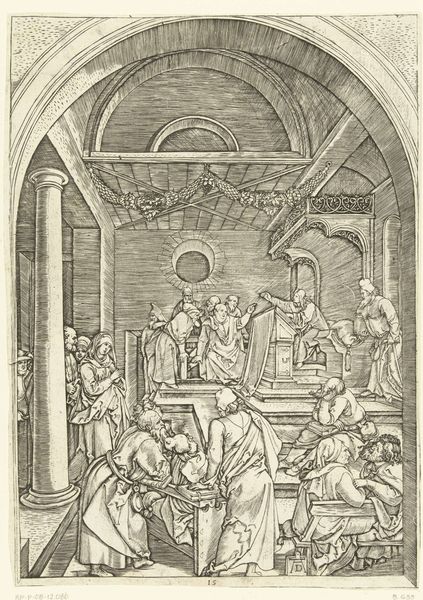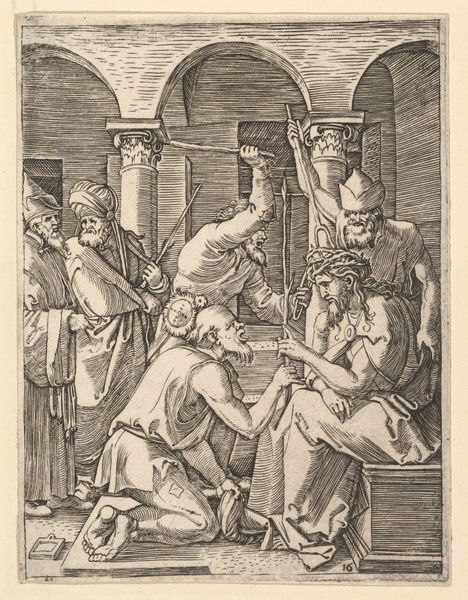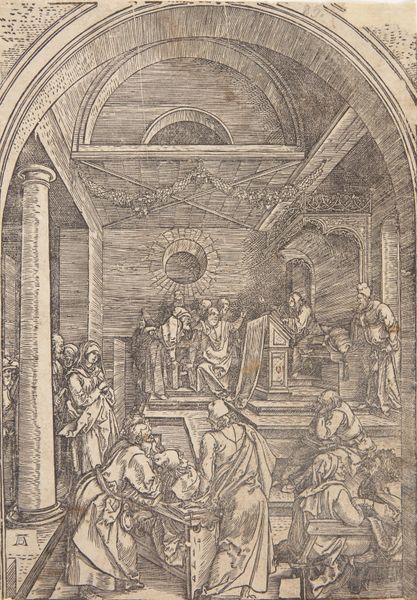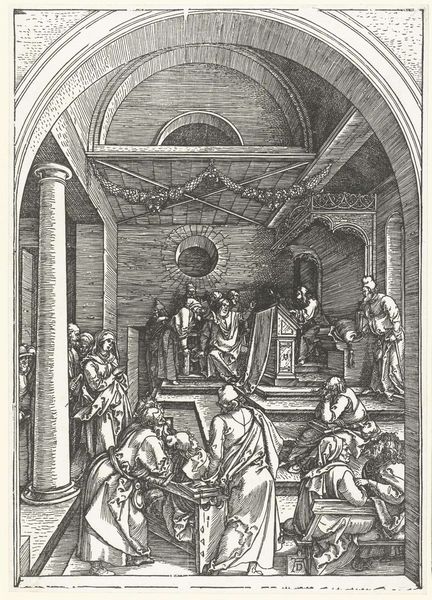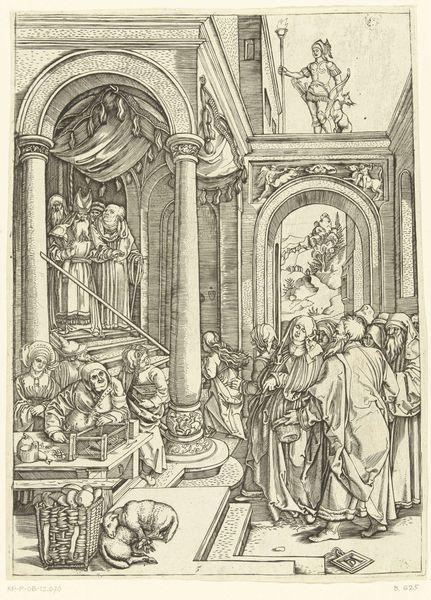
print, engraving
# print
#
figuration
#
history-painting
#
italian-renaissance
#
engraving
Copyright: National Gallery of Art: CC0 1.0
Curator: Here we have Léonard Gaultier's engraving, "Zacharias and the Angel of the Lord," dating back to the late 16th century. Quite the sight, isn’t it? Editor: Striking, yes. All those converging lines make me feel a little dizzy, a sort of sacred vertigo, perhaps? It's a visually intense moment. Curator: Indeed. Gaultier captures that biblical story with a really exquisite and intricate design. The detail in the architecture, the folds of the garments, and of course, the figures themselves… You'll see the angel Gabriel appearing before Zacharias in the temple. The lines seem to create a hazy but powerful environment. Editor: What strikes me is the clear social hierarchy. Zacharias, in his ornate robes, versus the kneeling figures in the foreground, heads bowed, seemingly pleading or supplicating. The scene is loaded with the dynamics of power and access to the divine, no? It really brings into focus the priesthood as mediator, with all its historical implications for knowledge, and even control of a population. Curator: Ah, interesting! And I find the positioning of the angel absolutely beautiful! But thinking along the same lines as you, note how that tiled floor stretches into the distance. It really pulls the viewer into that holy space but also seems to suggest distance and a fixed place for everyone. Editor: Precisely! Even though the perspective pulls us into the scene, we remain observers, positioned outside the immediate circle of the sacred event. And that sharp contrast between dark and light – it highlights not just the divine intervention, but also the sharp divisions within their society, those visible delineations within their everyday lives. Curator: I think there's a beautiful tension in that observation – Gaultier certainly prompts us to delve into complex emotions and societal dynamics. A bit like trying to pick one's favourite flavor of ice cream from an entire wall of colorful choices. Editor: Well, and looking back, I appreciate now how Gaultier’s print manages to situate a religious narrative within very earthly, tangible power structures. It transforms the ethereal into something very concrete and, in my mind, prompts a reevaluation of historical context of religious practice. Curator: Yes! A remarkable visual piece that, across the years, continues to spark such conversation.
Comments
No comments
Be the first to comment and join the conversation on the ultimate creative platform.
